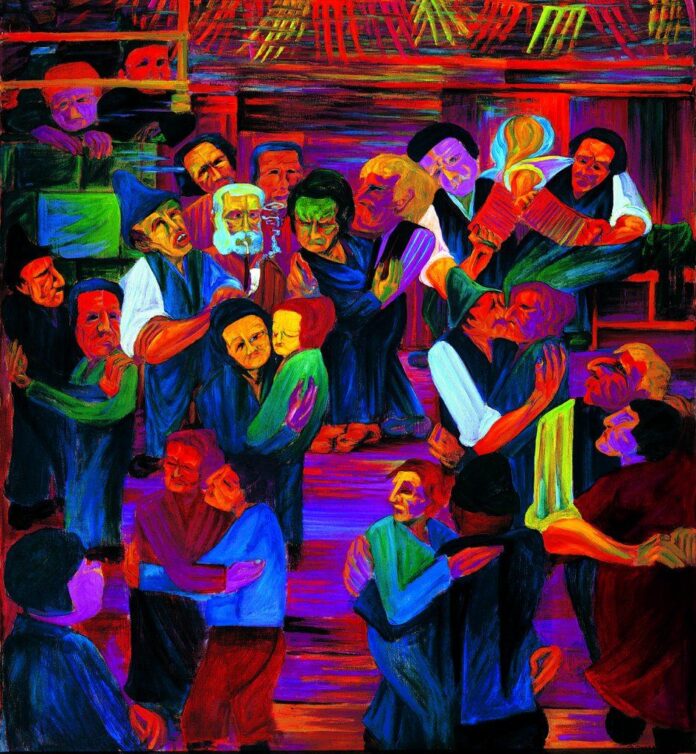What You Need to Know: Located just a short tram ride from Art Basel, Galerie Henze & Ketterer is a third-generation family-owned gallery specializing in Modern art, art Informel, and abstraction after 1945, along with select contemporary art. Currently, the gallery is presenting “Expressive! Music and Dance in Modern Art,” which will be on view through August 12, 2023. The show focuses on German Expressionist art that engages with music and dance, and the myriad ways artists have translated the two arts into painting, drawing, and sculpture. Featuring dozens of works from influential artists such as Ernst Ludwig Kirchner—which the gallery has a long history with—Emil Nolde, and Bernard Schultze, “Expressive! Music and Dance in Modern Art” is a dynamic and lively exhibition not to be missed this summer.
Why We Like It: Within the arts, the temporality, even ephemerality, of music and dance could be seen as antithetical to visual art traditions like painting and sculpture. The present exhibition, however, illustrates the storied history of artists being inspired by and engaging with music and dance in their work. German Expressionism, recognized for its emphasis on inner feelings and psychologies and its often bold, graphic style, is proven an ideal movement to capture the energy and animation of movement and melody. Kirchner’s from 1926 is a highlight of the exhibition. Wigman was a 20th-century German choreographer and pioneer of Expressionist dance; Kirchner portrays Wigman’s “dance of death,” which was based on a folk tale, and emphasizes through color palette and composition the rhythm and themes of the performance. Alongside works such as Nolde’s whimsical print
According to the Gallery: “Even since ancient times, dance, often accompanied by music or sound compositions, has been a fundamental part of human life. In fact, this discipline was very likely present in all cultures, such as ancient Egypt, ancient Greece, the Etruscans and Romans, usually performed at rituals, ceremonies, popular festivals, in any case, always in a collective gathering. Even today, wall paintings, vase decorations, mosaics, and frescoes testify to the early sequences of movements, which were often performed in the context of a religion but also as a cult. Thus, the representation of music was also handed down at an early stage
Since music itself cannot be depicted, it has been a top priority from antiquity until the present to bring the viewer closer to the melodies and their diverse mood content through images. In the visual arts, this was initially limited to the depiction of musicians and instruments. Consequently, not only the development of music was documented, but new forms of representation of music in the visual arts arose again and again,” wrote Susanne Kirchner and Katharina Sagel in the gallery essay “Expressive! Music & Dance in Modern Art.”
See featured works below.

Ernst Ludwig Kirchner, (1926). Courtesy of Galerie Henze & Ketterer, Riehen/Basel.

Ernst Ludwig Kirchner, (1919–20). Courtesy of Galerie Henze & Ketterer, Riehen/Basel.

Ernst Barlach, (1936). Courtesy of Galerie Henze & Ketterer, Riehen/Basel.

Emil Nolde, (1918). Courtesy of Galerie Henze & Ketterer, Riehen/Basel.

























